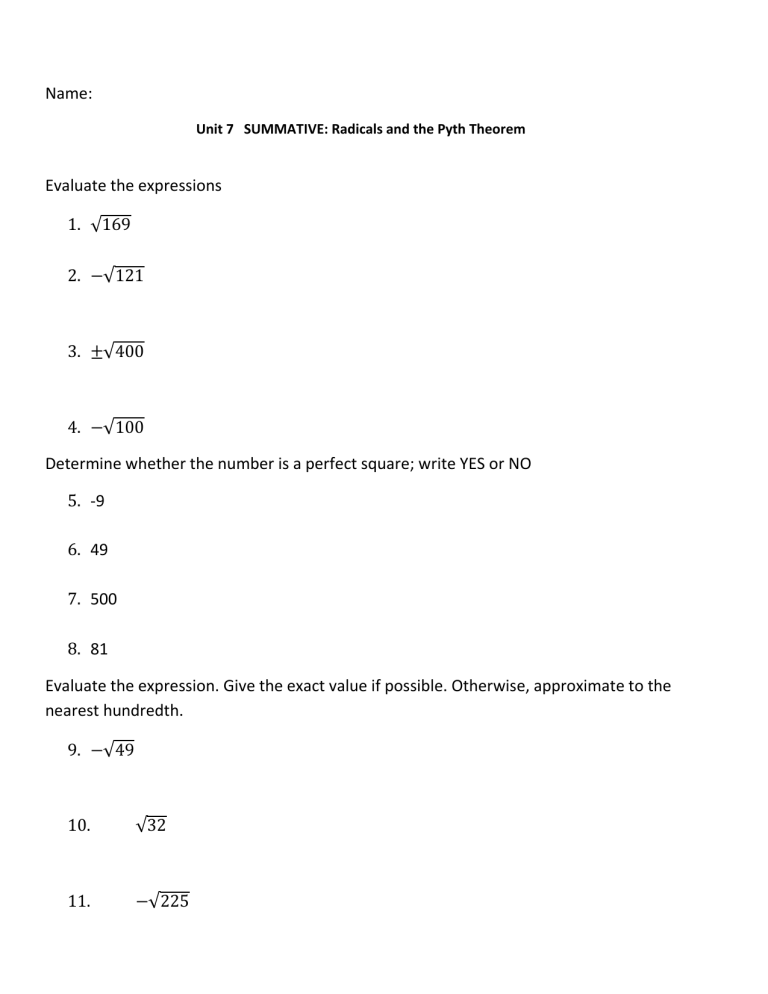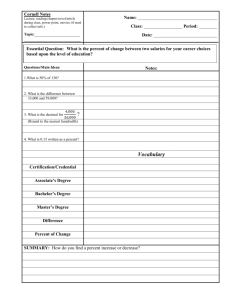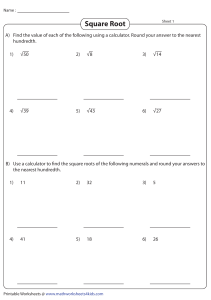
Name: Unit 7 SUMMATIVE: Radicals and the Pyth Theorem Evaluate the expressions 1. √169 2. −√121 3. ±√400 4. −√100 Determine whether the number is a perfect square; write YES or NO 5. -9 6. 49 7. 500 8. 81 Evaluate the expression. Give the exact value if possible. Otherwise, approximate to the nearest hundredth. 9. −√49 10. √32 11. −√225 Evaluate √𝑏 2 − 4𝑎𝑐 for the given values 12. a = 10, b = -21, c = 9 Use a calculator to evaluate the expression. You should get two answers. Round the results to the nearest hundredth. 13. −5±2√3 3 Solve the equation. Write the solution as integers if possible. Otherwise write them as radical expressions. ( Show steps clearly…Criteria C!) 14. 𝑥 2 + 4 = 16 16. 𝑚2 = 0 15. 3 − 2𝑥 2 = −33 17. 9𝑥 2 + 15 = 40 Use a calculator to solve the equation. Round the result to the nearest hundredth. 18. 5𝑥 2 − 10 = 3 Simplify the expression. 19. √20 20. √112 21. √ 22. 6√ 23. √12 ∙ 24. 32 50 28 9 √18 √3 A rectangle has width 2√5 and length√20. Find its area. 25. Find the missing lengths of the right triangle if a and b are the lengths of the legs and c is the length of the hypotenuse. BE sure to START with the Pythagorean Theorem. ( Criteria C ) a. a = 12, b = x, c = 25 b. a = 3, b = x, c = √13 26. Are 12, 8 and 17 lengths of a right triangle? Explain your reasoning. 27. The diagonal of a square patio is 20 feet. What is the length of each side of the patio? Round your answer to the nearest foot.



